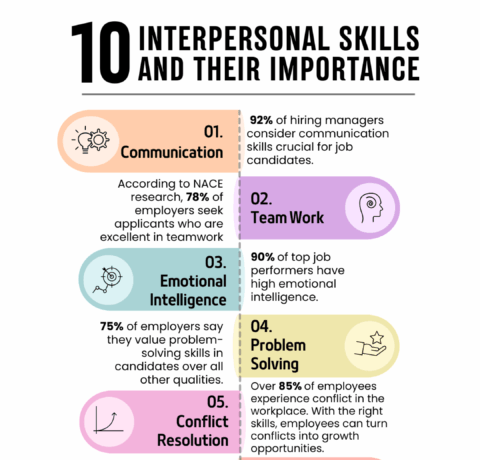How to Deliver a World Class Presentation Infographic
- Around 75% of the population worldwide suffer from the fear of public speaking, and for many, their fear is so great that it could derail their careers.
- In fact, 19% of the population are more afraid of public speaking than death, spiders, heights, and dark.
- Roughly 3 out of 4 people admit to being scared of public speaking. Now that’s huge!
Top fears of Office goers
- Public Speaking : 15.7%
- Delivering Presentations: 12.2%
- Cold calling: 11.5%
- Leading a meeting : 7.3%
- Missing a target: 6.7%
- Speaking on the Phone: 6.4%
Signs of Performance Anxiety
- Trembling voice
- Sweaty palms
- Shortness of breath
- Accelerated heartbeat
Public Speaking like a Pro
| Problem | Solution |
| Thinking that if everything doesn’t go perfectly, you’ll fail. | Accept that perfection is impossible and try to work on the elements that work. |
| Assuming you’ll fail in your next presentation because you failed the previous one. | Understanding that a single misfire doesn’t dictate everything. |
| Thinking that your presentation was a complete disaster while it was actually fine. | Wait to learn your audience’s reaction before you judge yourself. |
| Assuming that you will not perform well despite extensive preparation. | Appreciate the effectiveness of hard work and practice. |
The Stats Suggest…
- If you dedicate 70% of your time writing the script, you’ll be able to create a better presentation.
- Facts are 20 times more likely to be remembered if they are a part of a story.
- Your audience will remember 95% of what they hear and see when presented with images.
- The first 30 seconds of your presentation is the most crucial one as it decides if you can thrive the rest of it.
Tips for a World Class Presentation
Your presentation should be focused on 3 key objectives:
- Informing the audience
- Engaging the audience
- Influencing the audience
- And because you are performing, even entertaining the audience.
Planning
- Understand the objectives- Understand the needs, wants and wishes of your audience as well as yours.
- Interest value – Understand and research the interest values of the audience with regard to your subject and also of their divergent positions.
- Look for Common grounds- Always make it a point to look for common grounds between your subject of presentation and the needs of the audience.
Preparation
- Understand the Knowledge gaps– It is important to understand your knowledge gaps regarding the situation. About what you might know or not now about the subject and the presentation.
- Prepare for your audience– It is important that you understand your audience before you delve into the act. Choose your subject carefully and consider what your audience may or may not know about the topic.
- Record your rehearsals – Try to keep a record of your rehearsals on a smart-phone. This will not only help you analyze your performance, but you can also check the way you speak, sound, and look.
Delivery
- Open with vigour– The whole point of a presentation is to make the subject interesting. And having the right attitude and enthusiasm is half the battle won. As your enthusiasm and vigour will help keep the audience glued to your subject.
- Weave your thoughts– Remember to weave your thoughts in coherence; just like a story. And maintain the structure highlighting the key points.
- Express with visuals– Usually, it’s a good idea to express your ideas with visuals, as 90% of the information that we remember comes to us through our eyes. Also, don’t forget to add some statistics.
Conclusion
- Start and Finish with your Key Message- Remember, it’s your key message that you want the audience to remember. So, start and end your presentation with a message or idea that forms the primary argument of your presentation.
- Unify the Message- A good presentation should also be able to bring the beginning back in the game. For which you would need to summarize all the key points and then tie them up together.
- Call your audience to Action- A good presentation usually dies at the end, not because you couldn’t put your point forward, but because you didn’t make it clear for your audience that you’re done and they need to clap. A presentation is aimed at calling the audience to action, so make sure you do that.
Always Remember…
The secret behind a successful presentation lies not in its delivery but also on how well you take your audience through it. So try to:
Be authentic.
- Keep your points brief.
- Don’t expect to be an infallible expert
- Use a conversational style
- Consider taking questions during the presentation rather than at the end.
- Make it a two-way affair by engaging the audience in the process more often
How to Overcome Performance Anxiety?
Getting past your fears is only a part of the equation; building skill is a different proposition altogether. And for that you need to:
- Take some deep breaths
- Research and re-research your topic repeatedly
- Organise the points
- Practice and go through the points frequently
- Visualize success
- Seek some professional help to master the art
Delivering presentations may seem like a daunting task. But with the right preparation and planning, you can come up with a presentation that’s ‘world class’ in its truest sense.
See also:







You can adjust your cookie preferences here.